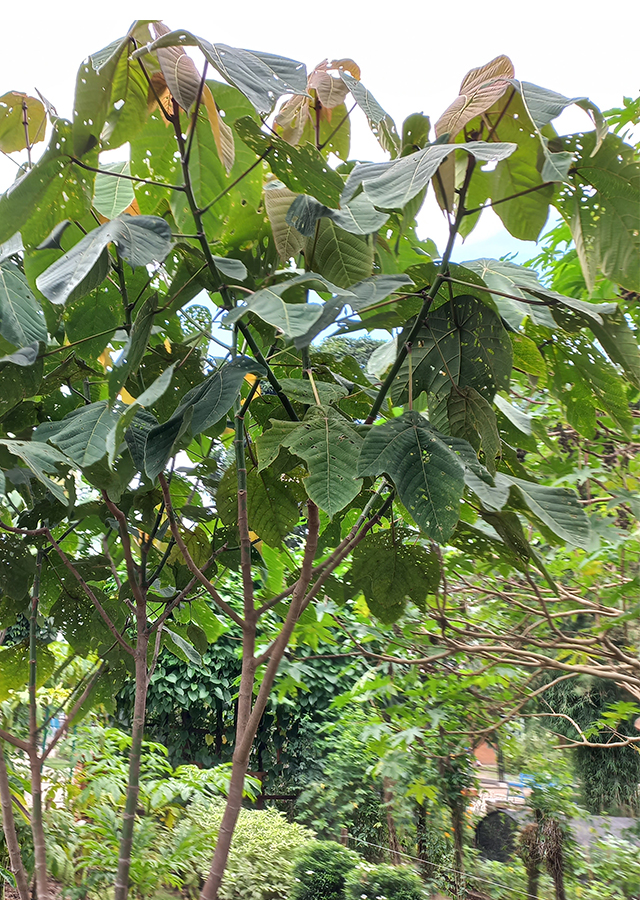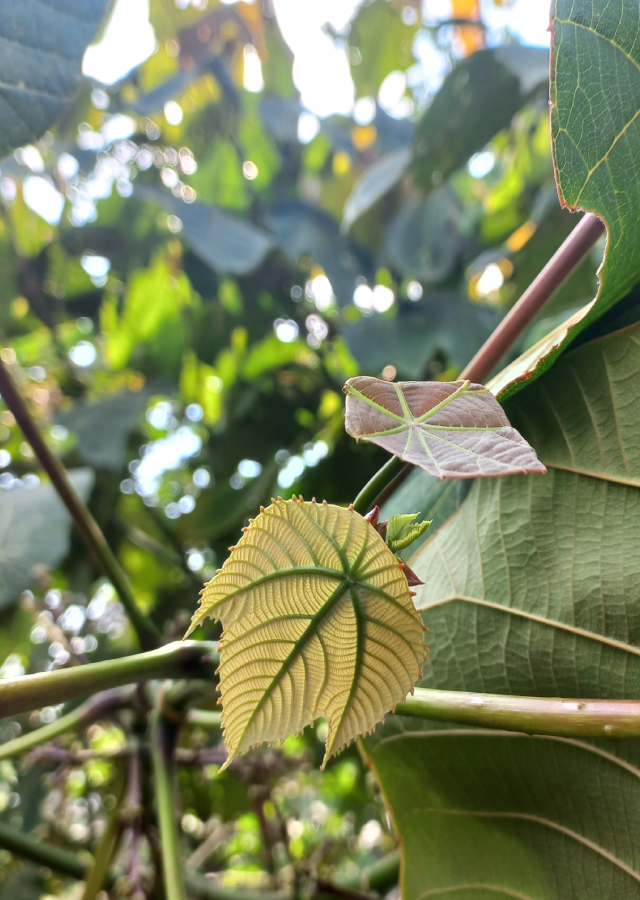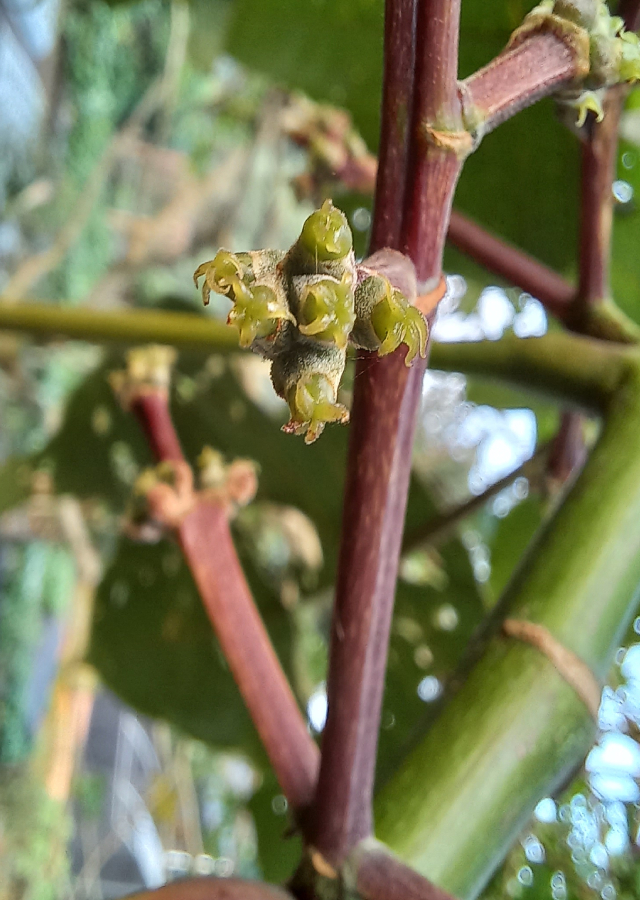Common Mahang
Macaranga triloba (Thuns).Mull.Arg
Euphorbiaceae
Location in our garden
Principal



Synonym
Macaranga cornuta Müll.Arg.
Macaranga quadricornis Ridl.
Pachystemon trilobus (Thunb.) Blume
Habitus
Trees. A perennial tree growing up to 35 m, and 70 cm in diameter.
Part Used
Leaves
Growing Requirements
Full Sunshine
Habitat
Forest
Terrestrial
Overview
Native to South-East Asia. Traditionally, the bioactivity of Macaranga triloba has been harnessed in folk medicine in the tropical region. In Taiwan and China, the dried leaves are used in herbal tea preparations. In Indonesia (by Talang Mamak society), young leaves are eaten as vegetable, the root is used as yellow colour dye, and the bark is used as glue.
Vernacular Names
Mahang (Malaysia).
Agroecology
Macaranga triloba grows as small trees mainly in secondary forests. opened primary forests, and newly cleared areas. Prefers sandy and loamy soils. It produces flower and fruit all round year.
Morphology
- Root - strong taproot.
- Stem - branch can reach 25 m, cylindrical, smooth, greenish-grey. Thick and fleshy whitish-yellow bark.
- Leaves - alternate, arranged in ascending spiral, palmate venation, rounded base, caudate apex, serrated tips, soft, green, and rough hairy abaxial.
- Flowers - small, yellow in colour, bisexual.
- Fruit - hard, small capsule.
Cultivation
Propagated by seed (generative propagation).
Chemical Constituents
Phenolic compounds, flavonoids (5,7,3’,4’-tetrahydroxy-6-geranilflavonol, kaempferol 7-O-β-glucose, and apigenin), alkaloids.
Traditional Medicinal Uses
- M. triloba is used to treat fungal infections and the leaf decoction to treat stomach aches.
- Studies had showed antioxidant, tyrosinase inhibition and antibacterial activities.
Part Used
Reference Sources
- Royal Botanical Garden Kew. (2017). Plants of the World Online: Macaranga triloba (Thunb.) Müll.Arg. http://powo.science.kew.org/taxon/urn:lsid:ipni.org:names:351400-1. 11-11-2021.
- Smith, Winifred. (No date). MACARANGA TRILOBA : A NEW MYRMECOPHILOUS PLANT. https://nph.onlinelibrary.wiley.com/doi/pdf/10.1111/j.1469-8137.1903.tb05820.x. 11-11-2021.
- M. Heil, A. Hilpert, et al. (2002). Nutrient allocation of Macaranga triloba ant plants to growth, photosynthesis and indirect defence. https://besjournals.onlinelibrary.wiley.com/doi/10.1046/j.1365-2435.2002.00643.x. 11-11-2021.
- Malaysia Plant Red List. (2010).Native Plants: Macaranga triloba. https://www.mybis.gov.my/sp/39342. 11-11-2021.
- Amirta, R., Angi, E.M., Ramadhan, R., et al. (2017). POTENSI PEMANFAATAN Macaranga. https://fahutan.unmul.ac.id/dosen/rudianto_amirta/assets/buku/Potensi%20Pemanfaatan%20Macaranga.pdf. 11-11-2021.
- Lim, T.Y., Lim Y.Y., and Yule. (2009). Evaluation of antioxidant, antibacterial and anti-tyrosinase activitiesof four Macaranga species. Journal Food Chemistry, 114 (pg.594–599). https://www.academia.edu/3660573/Lim_Lim_and_Yule_2009_Bioactivity_of_Macaranga_species_Food_Chemistry. 11-11-2021.
